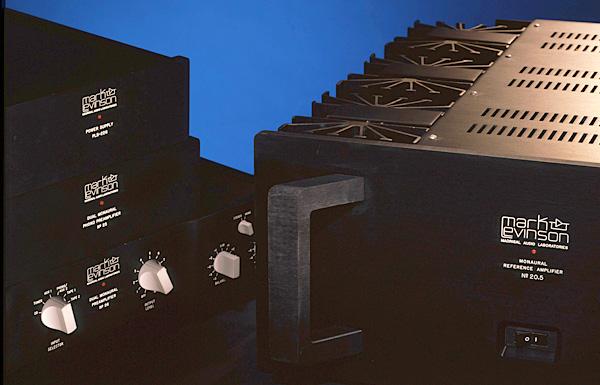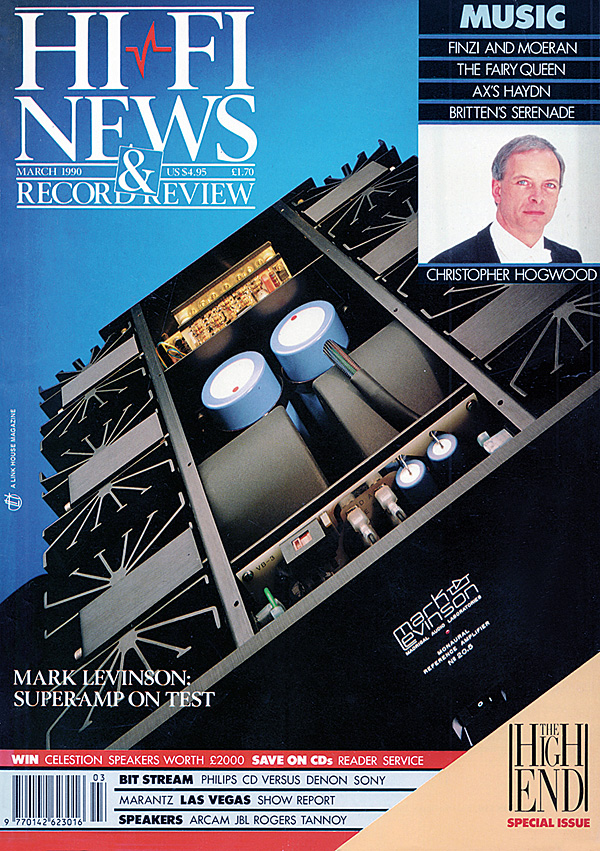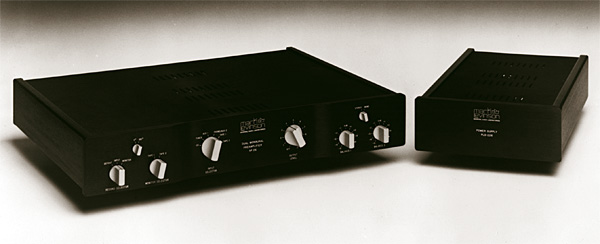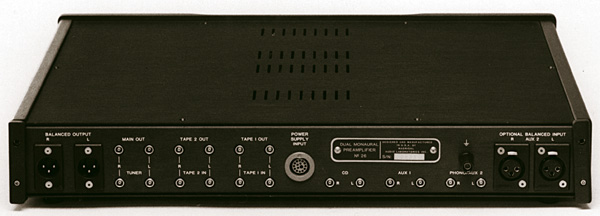Mark Levinson flagships

Since acquiring the Mark Levinson Audio Systems company five years ago, Madrigal Labs has pursued an evolving research programme, generating improved circuits and product designs. The result is that current MLAS products now have an importance comparable with the original brand's landmark designs.
There is one master preamplifier called the No26, which can be bought as a line device only (with its £1000 separate PLS-226 power supply) for £4470. Designed on a partly modular basis, one line input may be swapped for one of two other options, namely a high-performance balanced input (£5035) or an analogue disc input costing £5300 inclusive.

A higher performance analogue disc option may be obtained by ordering the No26 with the phono input section as a separately cased item, called the No25, complete with its own PLS power supply (£2990). Thus our top-of-the-line review preamplifier, which includes both options, totals £8500, give or take the necessary Madrigal HPC cables and Camac connectors and adapters. The grand total, including output cabling, is therefore a breathtaking £20,000!
Class A Classic
Billed as the top-of-the-line 'reference' 100W mono power amp, the No20 is the classic Mark Levinson Class A design, now in No20.5 form at a UK price of £12,000 the pair. They are substantial units which, incidentally, take less floor space than the Krell KSA-80 but run rather hotter. The input is balanced or unbalanced via a choice of XLR or a pair of Camac sockets. The output terminals, meanwhile, are heavy-duty Camac sockets, a nominal 5mm connection with a 60A rating. The new No20.5 is rated at 100W/8ohm Class A and 200W into 4ohm A/B (also 400W/2ohm).
Its balanced output allows for easy bridging of a brace of No20.5s from either balanced or unbalanced sources, to generate A/B power (with a very high Class A content) of 400W into 8ohm, 800W into 4ohm, and around 1500W into 2ohm rated under programme conditions.

Classed as a 'control amplifier', the No26 offers comprehensive input facilities with balanced and unbalanced outputs. The eight rotary controls are arranged unconventionally and are worth perusing. From the left we have the record selector control which has defeat, input and monitor positions, working in conjunction with the monitor selector for tape-one and tape-two sources. Nearby, a small switch allows for phase-inversion of the preamp path. The two dominant controls on the centre section are the input selector offering five named inputs (CD, tuner, aux 1, phono/aux 2, tape 1 and 2) and volume. The latter, labelled 'output lever', is continuously adjustable, and is calibrated 0 to 10.
On the righthand side, channel balance is less conveniently adjusted via separate subsidiary switched gain controls for each channel, calibrated in ±1dB steps to ±5dB. An adjacent small switch facilitates mono working. The preamp's balanced output is only available on XLR sockets, the Camac pair being unbalanced. When fitted, the balanced line input also offers an XLR connection. All other inputs and outputs are Camac, while the power supply connection is made via a special multipin connector.
Power Amp Tech
The No20.5 will happily double its rated 100W/8ohm power into successively halved impedances, down to 2ohm, with a progressively reduced Class A operating area. However, on a 4ohm load all but the last 3dB of dynamic range is still Class A. This is an expensive but proven design route to stable output characteristics, with a more constant supply drain and reduced fluctuations of internal gain and temperature tending to produce higher performance stability.

The power-supply constancy factor is additionally exploited in the 20 series by the rare provision of fully regulated supplies, even for the output stage. The key UK exponent of such regulated monoblock design is Naim, with the NAP 135. Each No20.5 has two 600VA Holden & Fisher toroidal transformers, and power-up is via soft-start circuitry to limit damage from switch-on surges.
Considerable research has gone into the supply side, with RF filtering present before and after the input fuse and the use of fully shielded transformer windings. A circuit monitors the AC power line for waveform symmetry, and active compensation is applied to improve it as and when required. Radiated line noise is reduced by the use of screened mains cable.
Meanwhile, banks of 36,000μF low-impedance capacitors provide the main reservoir, extensively bypassed by polypropylene-film capacitors. The protection circuit monitors unregulated and regulated voltages, temperature, DC offset, and complex VA factors at the output. The on/off switch is an electromagnetic trip and requires a full power-up if the protection circuit operates.
Although this is a DC-coupled amplifier, an input capacitor is nonetheless used, namely a 2.2μF polypropylene-film, double bypassed by smaller values of 0.1 and 0.01μF.
The amplifier is built on modular principles, for example, the audio core of the No20.5 (the AP4 module) may be easily retrofitted to a late-generation No20. Also, while 16 TO3 output transistors are used per channel, wired in complementary push-pull, each set may be detached for service or repair, the output stage being subdivided into small plug-in modules.
























































